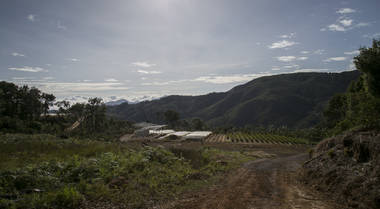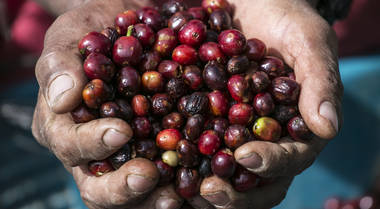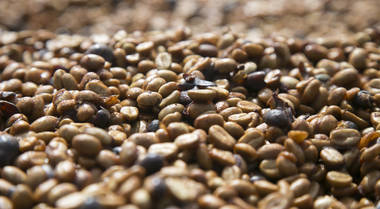The Best Costa Rican Coffee Beans
January 18, 2023
by Natasha Nesic

And I do mean a good cup of coffee. Not an average one. We’re talking about the kind of cups that you get from the lovingly-sourced farms you see here on Lardera, where the sense of magic you find in your beans after the boiling water hits… That’s something else.
Something wonderful. Have you ever thought about the science behind that sensation?
What it comes down to is the exact particularities of the growing region of the coffee in question. This is true for most agricultural products; you’ll notice how the environment produces the flavor in tea, for example— like the way that the craggy, mineral WuYi mountains yield an oolong that sits on your tongue with an aftertaste of garnet and rubies.
Coffee works the same way, which is why it’s my delight to do a series on how the different terroirs (aka, growing environments) contribute to Lardera’s incomparable selection.
Let’s start with Costa Rica! At the moment, Lardera works with farmers in Tarrazu and Central Valley to bring you amazing beans, so here are five reasons why Costa Rica makes great coffee— and why it matters.
Mountains
See what I did up there, introducing how the influence of a mountainous region can make a tea taste like precious gems? Consider the fact that the same potential minerals might show up in coffee as well. However, because these are very different mountains, the exact flavors and minerals are going to present themselves very differently from the tea example.Costa Rican mountains have more sun to offer, which manifests as bright, dry accents in the cup. (If you’ve never tried using a flavor wheel to articulate your coffee experience, cannot recommend this enough!) You’ll taste more of what are known as the “pepper” and “pungent” flavors, as well as sassy members of the “citrus” family. The Catuai Honey is an excellent demonstration of this, with its Anaerobic and Natural sisters bringing up more of the next factor…

Valleys
When you’re growing something below the horizon, it’s going to get less sun. By allowing coffee to be cultivated in such an area, it allows the resulting flavor to deepen and become richer with other accents and sensations. Lardera’s Catuai Anaerobic and Catuai Natural both present themselves with red, rich berries in their respective profiles, as well as more sensual notes in the roasty-legumey category like “cocoa” and “almond.”Exactly what produces those specific types of notes? Look no further than…
Soil
That’s where all the nutrients are! Elements like mountains and valleys affect primarily how much, and to what degree these molecules are expressed, while it’s the soil itself that contains the matter that the coffee plants absorb as they— like humans! — intake food from their surroundings to thrive and grow strong.The more fruity and chocolatey the cup, the greater the chance that there are certain beneficial antioxidants like anthocyanins being present. Anthocyanins are studied for their use against cancer, diabetes, and many other chronic illnesses that impact our lives. How cool is that?

Shade
Speaking of cool things— shade is definitely part of the coffee experience!Mentioning earlier how valleys affect flavor by reducing how much is lost to sun exposure, it’s worth noting how much shade coffee plants are given during their cultivation. This doesn’t have to be simply from being grown in a shady part of the world; plants can be given artificial shade like tents and tarps to protect them from the elements, while nourishing the best part of the flavor from the rays of the sun.
(So be careful the next time that someone says you’re throwing shade— it’s not necessarily a bad thing! In the world of coffee, at least.)
Seasons
All of these different environmental factors come into play during the natural turns of the weather throughout the year. Costa Rica has a rainy season and a dry season, which might be a concept unfamiliar to natives of four-season regions like North America and Western Europe, where crops are grown and harvested according to specific months during the calendar, and marked more by dates than by weather patterns. However, for many forms of agriculture, a dry/rainy split is fabulous because it simplifies when to plant and when to harvest, and alternating accordingly.Costa Rica’s dry season is great for lovely light roasts like Tipica Honey, which both present with the sunny flavors of red and orange fruits like apple and citrus to reflect the ripeness that came from their drying period.
Did you learn more about your coffee than ever before? Leave a note in the comments— flavored or otherwise!
